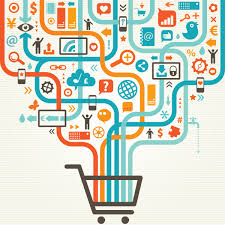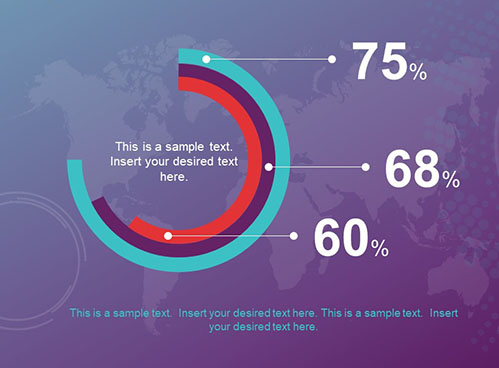When was predictive pricing born? Reportedly, at Japanese rice exchanges in the 17th century, which used rice stock analysis to describe the behavior of the stock market and make predictions about future trends and prices. Today, four hundred years later, retailers leverage the power of algorithms to help them set optimal prices and earn more. What major changes have machines brought to retail?
From the 19th century until today
There was something in-between the methods the Japanese used to predict prices and modern machine-based solutions which make pricing recommendations. It was the first machine learning algorithm, which was invented by Sir Francis Galton, an English statistician, in the 19th century. Called linear regression, the algorithm could establish a one-way dependency of one variable from another and predict one of them through the other one.
Since then, humans have been constantly upgrading their computational capacity: they have switched from an abacus to the simplest computing devices, and then to more sophisticated machines. Simultaneously, they have been accumulating large data sets: the data then adopted a structure and relationships between data points.
The more sophisticated data has called for more complicated algorithms.
What is the novelty of modern predictive pricing?
The term “predictive pricing” in its modern usage refers to businesses using machine-powered algorithms and their own big data technologies to pursue their particular business goals. The high-level goals of retailers are to increase revenue. To do so, they need to adjust their price management approach.
What is optimal? There are three types of parameters: “the more, the better,” for example, sales; then “the less, the better,” such as refunds, and “optimal,” like prices. Prices can tend neither to infinity nor to zero since they are linked to unit sales. They need to be just right.
When the two curves of prices and sales in units are heading in opposite directions, retailers need to find the point where their product is the greatest. The product of prices and sales in units is revenue.
The process of the price analysis evolution has had several stages:
- Businesses tried to set prices with a margin beneficial for them (cost-based pricing);
- Every business started having competitors, while the number of free niches started becoming smaller. This meant that businesses had to begin taking into account their competitors’ prices to identify if their offer was not too cheap or expensive against the market (competitor-based pricing);
- Data scientists use predictive analytics (algorithms) to avoid descriptive comparison of prices and precisely calculate the influence price changes have on sales (predictive pricing).
There are two types of predictive price analytics: qualitative and quantitative. What is the difference? The qualitative description can be verbally expressed in the following way: “Probably, my prices are too high as compared to my competitors.” But what does “too high” mean exactly? How to identify competitors?
In the quantitative description, more precise methods, such as equations, are used to identify competition, understand how much lower or higher prices should be against them to ensure the highest number of sales in units.
In predictive pricing, artificial intelligence processes historical data about price optimization and sales dynamics and use the established quantitative relationship to recommend optimal prices for retailers.
Benefits and drawbacks of predictive pricing for retail
There are two benefits that the predictive pricing model is bringing to retail.
- Retailers who use machine learning algorithms to set prices to experience sales growth. They start selling more since customers consider their prices optimal.
- The predictable and scalable success of pricing decisions: when the price is managed right, retailers always know the reason behind it and will be able to repeat the success.
- As the amount of varieties of data is soaring, the algorithms which process it are becoming increasingly sophisticated, while computational capacities are getting more rapid. As a result, retailers make pricing decisions quicker and change prices more often.
However, technology is not all-beneficial:
- Prices are changing too fast, and customers have no time to compare them. As a result, purchasing decisions are becoming less objective, while the spontaneity of buying choices is growing.
- Everything — the algorithms, the prices they predict, the customer behavior — is becoming more difficult to manage.
Customers tend to showcase a less rational behavior in combination with regular behavioral patterns. In this situation, retailers need to consider an optimal price not for the total population of buyers, but for every individual customer with specific behavior patterns.
As a result, personalization and hyper-personalization are emerging. For customers, it means that every one of them is offered an individual price crafted using their previous buying history.
Hyper-personalization causes another issue: analysts and programmers still lack data to develop an algorithm which would not irritate customers by sending them messages every single minute or so and instead provide them with optimal offers, thus making them happy and generating more revenue for retailers.
It is quite possible that within a couple of years algorithms will be quite capable of doing that: as soon as analysts collect more customer data and develop more sophisticated software.
Predictive pricing algorithms enhance analysts
Despite a common fear of algorithms making analysts redundant, for now, machines are enhancing humans. With algorithms doing all the dirty work of collecting and structuring data, as well as making pricing recommendations, analysts can switch to high-level decision making (how to generate more revenue, become more profitable or clear stock) instead of digging into hundreds of Excel spreadsheets, looking through thousands of lines and setting prices manually, while often basing their decisions on inaccurate or incomplete data, or just being under fatigue.
Analysts start thinking more strategically and fine-tune the operations of the algorithm by providing it with correct business goals.
However, is there a possibility of the algorithm replacing humans? As it turns out, it is quite possible. As soon as the predictive algorithms are capable of strategic thinking (they will be able to win business games), they will be able to substitute analysts and several other professions in business.
Today algorithms are still very “short-sighted”: they can predict only one step ahead. If they have a volume of data covering 1,000 periods of monitoring, the only period they can make predictions about is 1,001st.
Data is the oil of the 21st century
To operate, algorithms require high-quality big data, which means it is complete and its amount is big enough to make predictions. Modern machine learning algorithms need at least hundreds of thousands of data points to operate effectively. Neural networks need significantly more: millions of data points.
Algorithms need data, which has the same structure and format (which can be any), consists of variables and monitoring results, and covers at least three years.
A new mindset of retailers
Modern algorithms are significantly more precise and sophisticated than their predecessors, which needed interpretation by humans. It is quite difficult to look “inside” advanced pricing software and understand the reason and way of “thinking” behind a pricing decision.
Today businesses which use such algorithms need to adjust their mindset to trust the software without fully understanding how exactly it works (it is impossible to control it since it performs millions of operations per week) and what logic it uses to recommend prices. Instead, retailers need to switch from managing prices to managing the algorithm.
All this begs the question: does this software make the right predictions?
To overcome the fear and distrust, the algorithm needs to be tested during a pilot, which shows whether it is more or less efficient than a group of analysts (it surely is since it can do the work of a hundred of analysts).
Currently, retailers can do without an algorithm. However, when the majority of retailers will be using the software, the rest of them will be forced to leave the market. Algorithms offer a systemic approach and action repetition, making it impossible to compete with them by using spreadsheets, simple equations, and human analysts.
Conclusions
Algorithms are significantly changing retail by making it richer, more reactive, rapid at setting optimal prices and smarter. On the other hand, algorithms make retailers face two challenges: more demanding and unpredictable customers, and the necessity to trust pricing software completely.
It is difficult to predict if algorithms will take over the retail world while throwing those who do not use them off the market. It is equally possible that the machine learning approaches fail to describe and predict the ever-changing retail environment better than we, humans, can, and make us refuse using it. Where the retail goes from here no one knows yet.








![60 stats & trends that will define the future of eCommerce [Infographic]](https://crayondata.ai/wp-content/uploads/2022/05/eCom-374x288-1.png)
